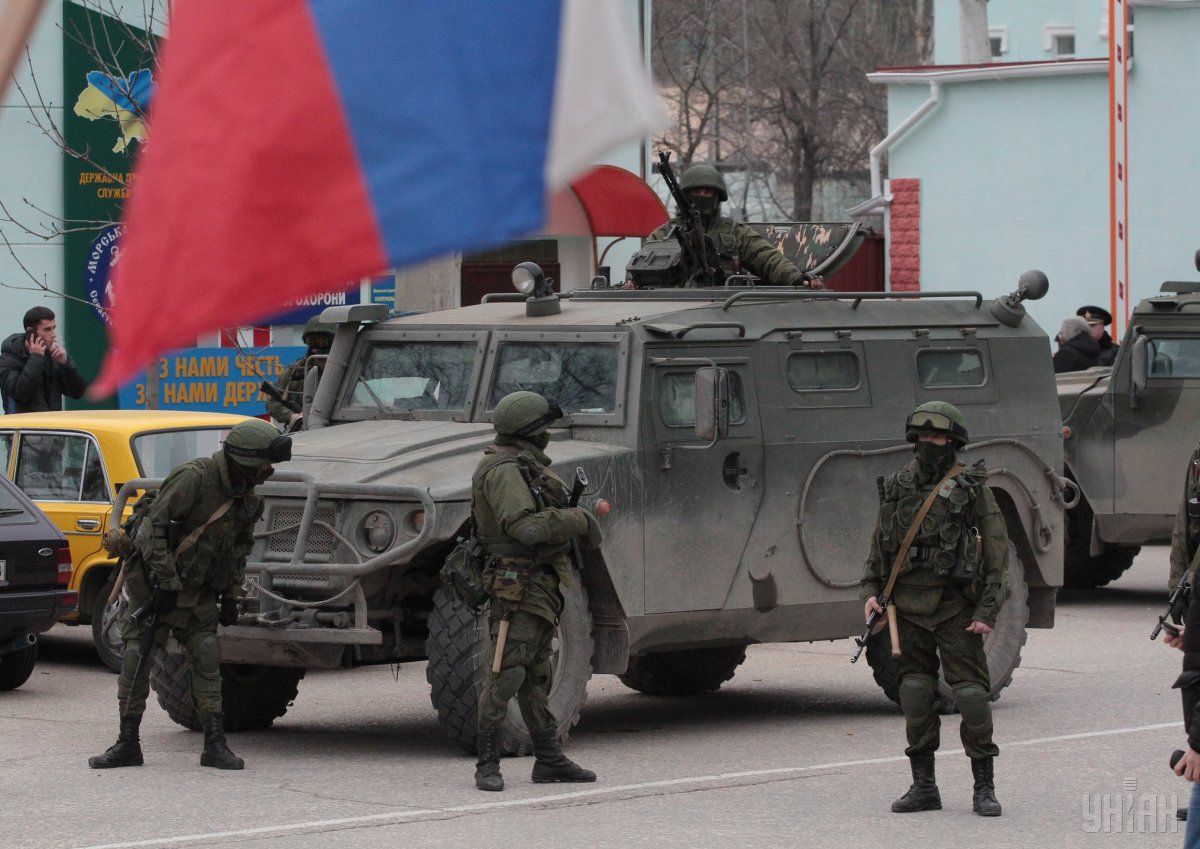
The West, as well as very many Ukrainians, have been all too ready to swallow Russia’s line about the supposedly overwhelming support for ‘joining Russia’ in Crimea and for ‘Russian world’ / ‘Novorossiya’ ideology in Donbas.
The narrative fails to address Russia’s very direct role at all stages of the war in Donbas, but it also, as political analyst Yevhen Sereda has pointed out, ignores the results of numerous opinion polls taken before and immediately after the beginning of the supposed ‘separatist’ uprisings in the Spring of 2014, according to the Kharkiv Human Rights Protection Group.
All such surveys from February to April 2014 indicate that there was no majority support for ‘joining Russia’ anywhere in Ukraine.
The last survey into Ukrainian attitudes to Russia and vice versa came just days before Russia’s invasion of Crimea. In Ukraine, it was carried out by the Democratic Initiatives Foundation and the Kyiv International Institute of Sociology on Feb 8-18, 2014, with results compared to those obtained by the Levada Center in Russia.
Some 12% of respondents throughout all parts of Ukraine wanted to form a single country with Russia. This had fallen over recent years from 20%, but increased by 3% in connection with Euromaidan. The figures are undoubtedly higher in Crimea (41%); Donetsk region (33%) and Luhansk region (24%), but still far from even a simple majority.
A poll on Ukrainians’ attitude to the status of Crimea and to whether Ukraine should remain a unitarian country was carried out by the Rating Sociological Group March 1-7, 2014, i.e. between Russia’s invasion and the pseudo-referendum it used to claim justification for annexation. The results directly refute key assertions made by Russia during annexation and since.
Some 61% of all Ukrainians wanted a unitarian state, with this having risen from 50% in 2011. The percentage of supporters of a federal system had remained almost unchanged (25% in 2011 and 24% in 2014), although a majority (59%) supported this in Donbas.
Only 5% of Ukrainians (including respondents in Crimea) thought that Crimea should be separate, or handed over to Russia, with a large majority (77%) believing it should retain its autonomous status within Ukraine. That percentage had risen from 60% three years earlier. Most of those who supported Crimea’s separation and ‘joining’ Russia were in the south, however there was still only 19% support.
87% of the respondents were against Donbas seceding from Ukraine (with 9% in favor).
Russia’s claim that it was ‘defending’ Russians and Russian-speakers was made without checking what those groups actually wanted. Sociologists, on the contrary, asked and found that no more than a quarter supported Crimean or Donbas secession, with around 70% against.
A survey was carried out by the Ukrainian Sociological Service for the Democratic Initiatives Foundation and Civic Watch on March 16-30, 2014. The questions were aimed at determining whether Ukrainians had separatist leanings, and found essentially that they did not.
An absolute majority (89% both in Ukraine as a whole, and in Donbas) view Ukraine as their motherland. Only a small percentage supported separatist ideas – 8% for the country as a whole, and 18% in Donbas.
Read alsoU.S. Ambassador to Russia reaffirms support for Ukraine's integrity – media
Only 6% of all respondents would want their region to form its own independent state, with the greatest percentage, again in Donbas, being 17%. Only 9% of all respondents, and 24% of respondents in Donbas would like their region to join another country, with this wish in Donbas much higher among people over 55 than those under 30.
Those actively supporting the so-called ‘Russian world’ were in the absolute minority, and even if you add those passively supporting it, there was still never more than a third who would have supported seceding from Ukraine and joining Russia.
While Russia has certainly expended considerable effort and vast amounts of money on pushing the idea that Ukraine is a hotbed of ‘separatism’ and that Donbas was fully behind the Russian-armed and led militants, there are also other reasons for the widespread view that separatist moods were so much more prevalent.
One is the role played by the Ukrainian, and, to a lesser degree, the western media. Put most brutally, the seizures of administrative buildings, the aggression and violence were more eye-catching than pro-Ukrainian unity demonstrations. It also very rapidly became too dangerous to demonstrate pro-Ukrainian sentiments, and, in Donbas, to be an independent journalist.
The chronology of events in Donbas is of vital importance, KHPG notes.
There had been attempts from early March by pro-Russian locals to seize official buildings in Donetsk, Kharkiv, Odesa and other cities. Even after they received backup from athletic ‘tourists’ from across the border, such protests still failed to spark ‘people’s uprisings’. It was on April 12 that Igor Girkin [Strelkov], officially an ex-Russian military intelligence officer, and 51 other spetsnaz officers seized control of Sloviansk in the Donetsk region. Russian historian Boris Sokolov notes that Girkin himself has admitted that he traveled to Sloviansk from the already occupied Crimea through Russia. “It is absolutely impossible to conceive of several dozen armed men just wandering through Russian territory without being asked any questions by the enforcement bodies. There can be no doubt that Strelkov carried out all these movements on orders from Moscow”.
It was that which brought war to Donbas, with the deaths and suffering still continuing.

